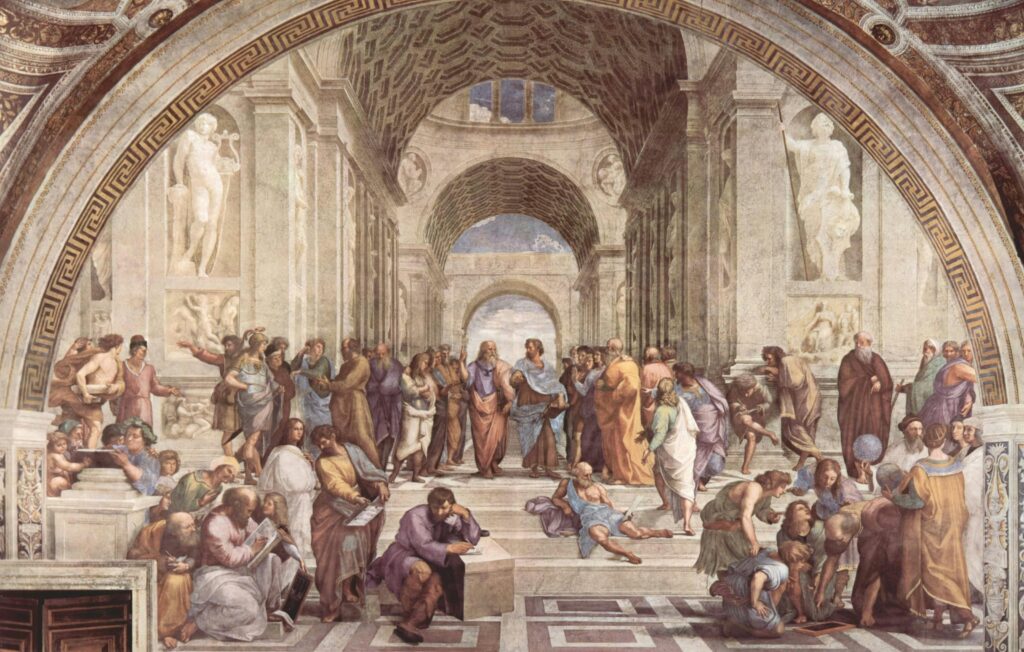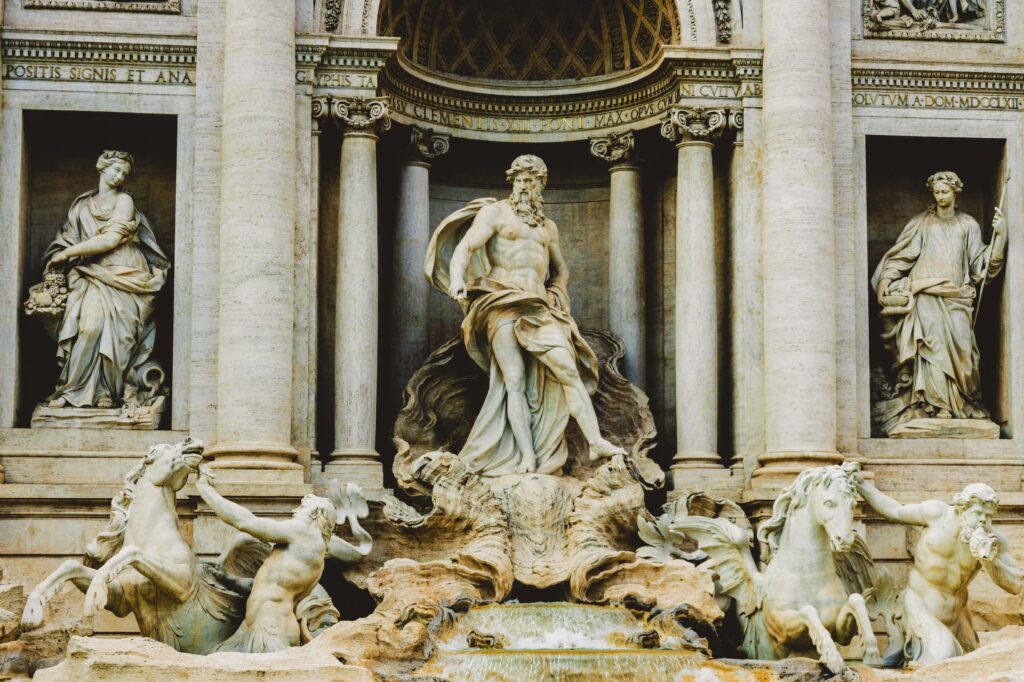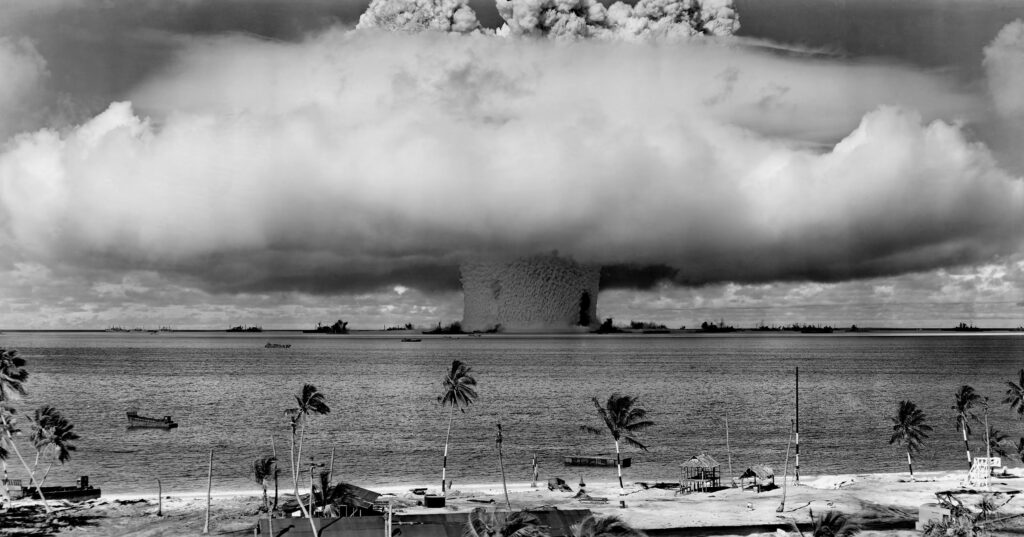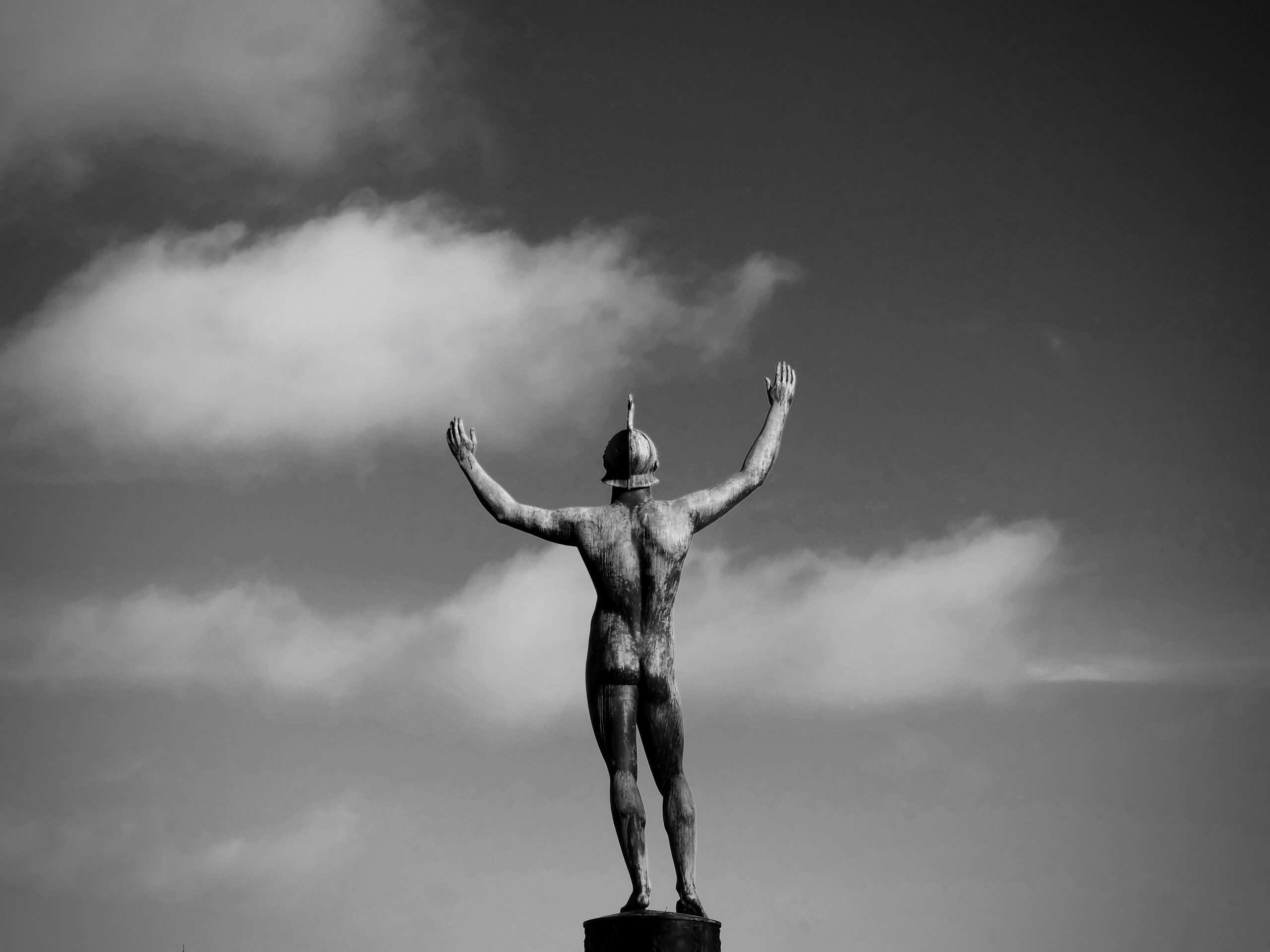I was really upset when I realized I’d forgotten my book in the seat pocket on the plane. I had just started reading it, The Graveyard Book by Neil Gaiman. I love his writing, and envy his indefatigable ability to create tales skilfully woven into the fabric of reality. There are two more flights ahead, and without a book in hand, it’s a good time to ponder the eternal. Myths.
Myths of the future
They’ve always been with us. At first, they hid in cave paintings and shamans’ songs, then they passed into epics, all sorts of bibles and chivalric legends, transformed into utopias, westerns, Marvel comics and election manifestos of political parties. Myths were with man at the dawn of his emergence and will be with mankind at its decline.
They are not just tales around the campfire, they are an accessible form of explaining the world that is older than science and religions. It is a universal language with which tribes became nations and peoples became civilizations. It is a promise – of immortality, justice, and sometimes just daily bread. Myth is a way to undo chaos, to gather everything into a story, to experience it yourself and pass it on. Like DNA, from generation to generation, but through words, images and rituals. And while genes take care of our biology, myths guard our meanings.

The ancient myths are the first great structured library. The Greeks and Romans gathered everything human into a single pantheon: fear of death, thirst for glory, sacrifice, jealousy, passion, and the search for immortality. Olympus became a model of society, the gods were not much different from humans, except that they were more capricious, launched bolts of lightning, and summoned typhoons. But in these stories starts to emerge the archetype of the hero – a mortal who was not afraid to descend into the underworld or fight a monster. Gilgamesh, Ural-Batyr, Odysseus – all of them in different masks repeated the same truth: man is mortal, but in memory and history he can live forever. Thus, myth itself created the basis for immortality, it became the thread linking the times and allowing the past and the future to talk to each other.
Over time, myth evolved. It transformed from stories into a system that splintered into different religions following the fall of the Roman Empire. The West sought structure and clarity, monastic scriptoria turned myth into a codex and sent thousands of noble men on crusades in search of the Holy Grail. Meanwhile, the East wove carpets of fairy tales and parables in which the protagonist did not so much conquer as seek – wonder, knowledge, truth. Sinbad the Sailor is an excellent testimony to that. The myth of the West was built as a law, the myth of the East was woven as an ornament.

The Renaissance gave Europe a fresh myth – that of the creator human. Scientists and artists became the heroes of the new time, their creations became revelations, and man, for the first time in many centuries, suddenly felt at the centre of the universe, capable of creating beauty and harmony without divine intermediaries. At the same time, the East was creating algebra and medicine, translating Aristotle and writing treatises that put knowledge on the same level as prayer. Europe rushed forward, toward progress and the future, while the East turned inward, toward wisdom.
This divergence did not destroy the myth, it made it much more encompassing. The linear structure of time and the cult of progress were filled with mysticism and an endless swirl of meanings. The myth became multifaceted and ambiguous. And in this symbiosis, at the end of the Renaissance in the glow of art there were shadows of doubt – man who had been feeling like a god suddenly realized that the universe was much larger than the dome of the cathedral, and its laws are much stricter than the bright palette of the artist. Galileo raised his telescope to the sky and realized that it does not revolve around the Earth, and Giordano Bruno said aloud what his contemporaries were afraid to even think – the cosmos is infinite, and there are more worlds than stars in the sky. His idea was burned with him at the stake, but in the smoke of that fire a new myth was born. The myth of the Mind that dares to argue with God himself.

The myth of the Mind quickly gained the power of religion. Thought became the ultimate virtue, encyclopedias replaced bibles, and thinkers became the apostles of a new age – the Age of Enlightenment. Miracles and prophecies were relegated to the background, now only science and education were to lead mankind to the light. Belief in linear progress became the new dogma, and history became the road to universal happiness. Rationalism became the quintessence of the new social order. The world was no longer a mystery; it became a problem to be solved.
And myth, in all this historical lineage, never once disappeared! Plots, characters, names changed, but it always adapted to the new reality, like an organism to climate change. Its function remained the same – to give meaning, which cannot be achieved by any formulas. Myth has proved remarkably flexible to change – it can be a god, a hero, a theorem or a law, but each time it helps us negotiate the chaos surrounding us. It is this ability that has made myth a companion of civilization.
Meanwhile, my next flight has started boarding.

The next stage in the evolution of myth came with steam and machinery, the era of industrialization began. And now engineers and labourers were the heroes. They were not looking for the holy grail, eternal glory and feats – they built factories, pulled rails, launched conveyors, steamers and airplanes. They became cogs in the big idea leading mankind into a new Golden Age. Disciplined and obedient. Cogs.
So the myth of progress suddenly took on a political flair. Industrialization changed the very structure of the myth. Progress turned into a religion without a god; instead of icons there were blueprints, instead of prayers there were slogans. Man realized that the future could be built with his hands, which meant that it could be planned. Karl Marx, the visionary of the time, determined that history was not a chaotic set of events, but a natural movement towards the final social structure of the future – the society of equality. The Golden Age was no longer a metaphor, but a plan to be accomplished.
Lenin made this idea both a weapon and a rite of passage. The revolution brought about the collapse of the old world, the party replaced the church, and the leader was hailed as a prophet. At the same time, in the capitalist world “across the ocean,” the myth sounded somewhat different, but invariably carried the idea of shared success. In India and China, a new myth of revival began to emerge.
But all these myths – industrial, revolutionary, capitalist, national and spiritual – were destined to collide sooner or later. The first half of the twentieth century marked the beginning of the era of wars, where each of the myths was tested. The First World War suddenly revealed that science and technology can create not only roads and factories, the myth of a bright tomorrow had been cracked, but not completely destroyed. The League of Nations appeared as another, now collective utopia myth of peace for centuries.

The Second World War was an even greater collapse; here the myths of civilizations, not peoples, came together. And they were no longer competing with each other, they were fighting for survival. Some, like the myth of racial superiority, failed and collapsed, while others became the basis of the post-war world order. The atomic bomb became a symbol of the realization that the myth of progress could lead not only to a utopian Golden Age, it could just as easily lead humanity to the apocalypse.
New myths rarely emerge from nothing; they are born on the rubble of old, stale, burned-out ones. Faith in progress collapsed in the trenches and gas chambers of Auschwitz, and a new myth of human rights was born from the ashes of bombings and crematoria. Like a Phoenix, with new hope and justification for humanity’s existence as such. For the first time it tried to build something not on the basis of differences, but on the basis of something common.
For the first time in the history of mankind, a universal set of basic values common to all people was created. But a myth must remain a myth. Although the Universal Declaration of Human Rights has become the basis for international law, it has no legal force of its own. All you have to do to be convinced of this is to turn on the news.
That’s where the new mythmakers came in, with the myth delivered right to the living room couch. If it used to be a narrative for a tribe or a nation, now myth became a product – and every programme, series or commercial had one, albeit small, but its own. Myths went into consumption, they could be bought, collected, thrown away or swapped for new ones under a trade-in deal. Corporations took on ancient stories. Coca-Cola occupied Christmas, Disney polished to a happy ending Charles Perrault’s and the Brothers Grimm’s terrible parables about morality, and Jobs with his bitten apple exploited, perhaps, the most famous myth about the Garden of Eden.

In almost every airport in the world, before boarding a plane, we pass through a myth sought after by travellers – the shiny Duty Free area, where, according to legend, whisky, perfume or fashionable eyeglasses can be bought tax-free.
My last flight was delayed for a few hours, it’s time to realize that airport stores are not about saving money, they’re about ritual. A duty-free bag becomes evidence of having travelled from one world to another, and such movements are always shrouded in a halo of colourful narratives.
Waiting room selfies, hotel check-ins, island stories – the internet has given us the ability to create our own myths, spread them instantly, and receive confirmation of their importance in the form of subscribers. The myths of today are faster and lighter than their predecessors, they live for 24 hours, but still manage to influence millions of people. Memes have become new parables, likes have become a collective ritual, and algorithms have taken the place of priests. It is they who decide who should be fed which myths.
And although the power of influence of modern myths is great – a viral video can bring down a country’s government, a tweet can bring down a market, and a meme can trample a reputation – most of them are just empty shells that do not carry deep meanings. The structure remains the same, the heroes are those who go beyond the ordinary, but if before it was Prometheus who gave people fire, now it is a blogger with a successful collab. The new Olympus is the top of YouTube and Instagram, the celestials now dwell there.

That’s how the flight delay affected me, ranting on about how things used to be better is one of the most enduring myths of all. It is built into the firmware of mankind like a bug – we update reality, but we can’t accept it at once. Let’s keep going.
Against the background of the general emptiness of information noise and gigabytes of meaningless videos, stable constructions still appear. Bitcoin promises us freedom from banks and states, Elon Musk is pulling us into space, and artificial intelligence promises the arrival of life form number 4. These new myths don’t just grab attention, they try to structure our future. Lawmaking works on them, economies are being restructured, and entire nations’ strategies are being shaped. Myths about the digital future have become a long-term and significant reference point in the direction of human evolution, where man himself ceases to be the end point of evolution. Transhumanism becomes a new reprint of old tales about the search for immortality.
It is no longer just a philosophical experiment; we are hurtling at the speed of light toward Kurzweil’s singularity as the salvation rather than the catastrophe of humanity. Memory, emotions, personality can be uploaded to a server and “live” indefinitely as long as the server is powered by electricity. The data centre will become the holy grail for the knights of the new formation.

But remember where the myth of progress led? Nick Bostrom, the herald of the digital apocalypse, warns us – this myth is not about salvation, it’s about controlling algorithms, which are already showing their true nature. It calls for aligning the motivations of machines with human values faster than AI takes a decisive advantage and fills the world with unneeded staples. Simply because too narrow a focus has been taken as the basis for the myth.
And then there’s Harari’s version of Homo Deus. We have always looked for the divine externally, but now, after millennia, the myths have led us to a mirror. God must be man. Creator of interplanetary flight, of genetic perfection, of the surrounding reality. We’ve gone from clay tablets to neural networks, and all along the way myth has been the fuel that has driven us forward. Gods don’t die, they just change their avatars. Myths do too, they elastically adapt to our tasks. And our main task now is to choose a collective mythmaker, who will lead humanity – not thanks to, but in spite of everything – to the Golden Age of evolution. To one more myth that is sustainable at all times.
On my way out of the airport, I found a bookshop, and in it, Neil Gaiman’s The Graveyard Book. A story about a boy raised by ghosts. Like the rest of humanity, raised by stories that dissolve in time.
Let’s dissolve this story here, too.



